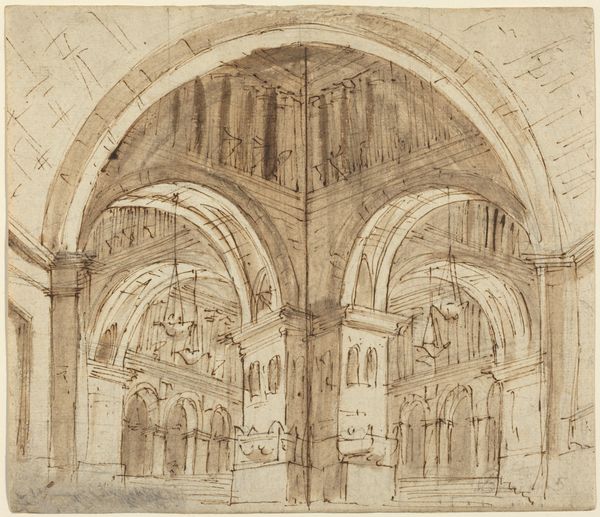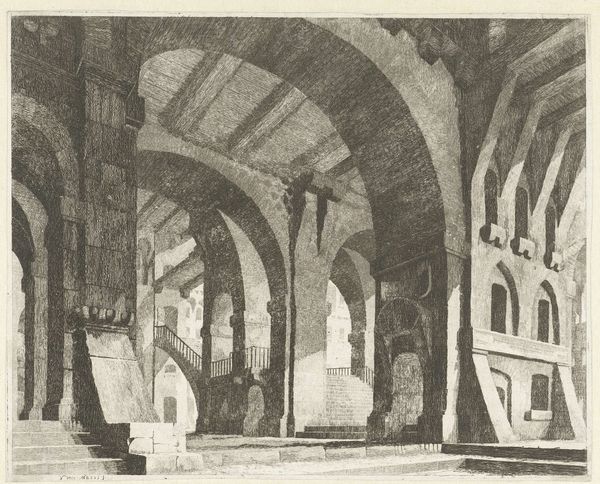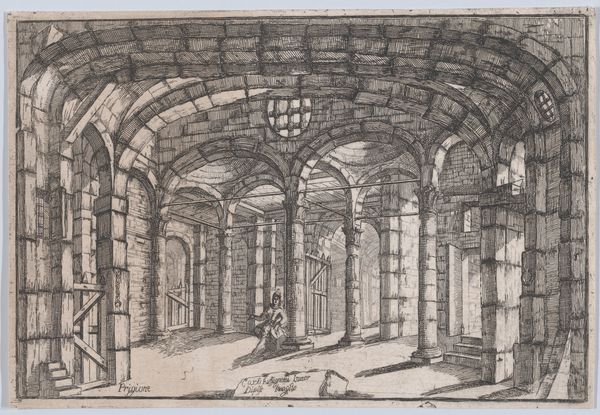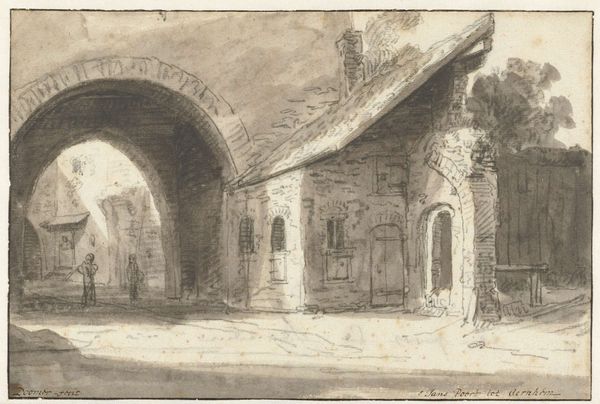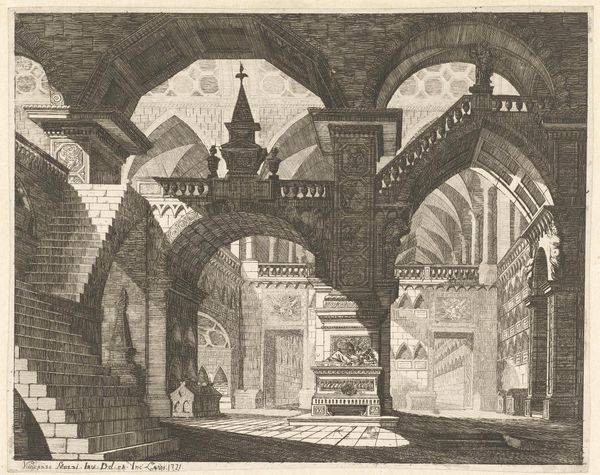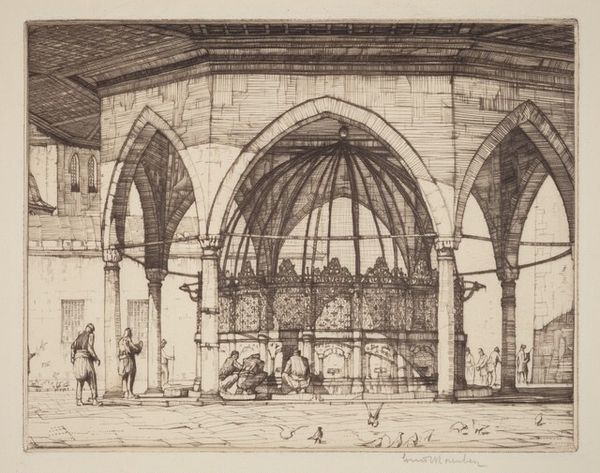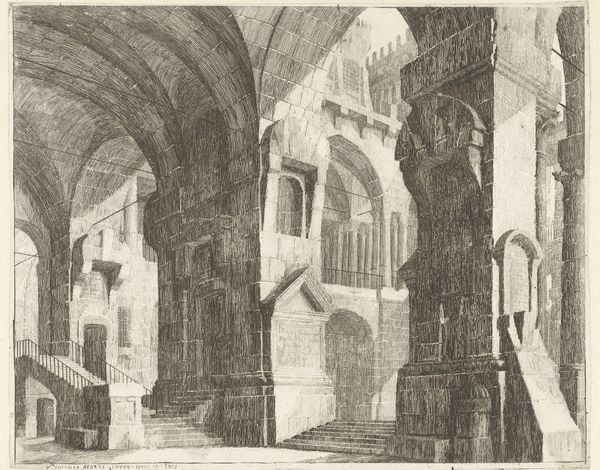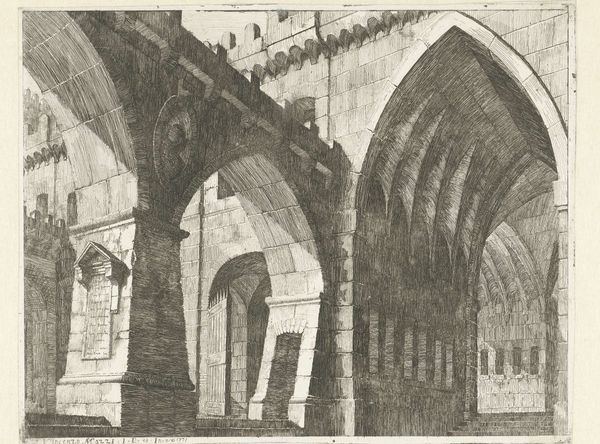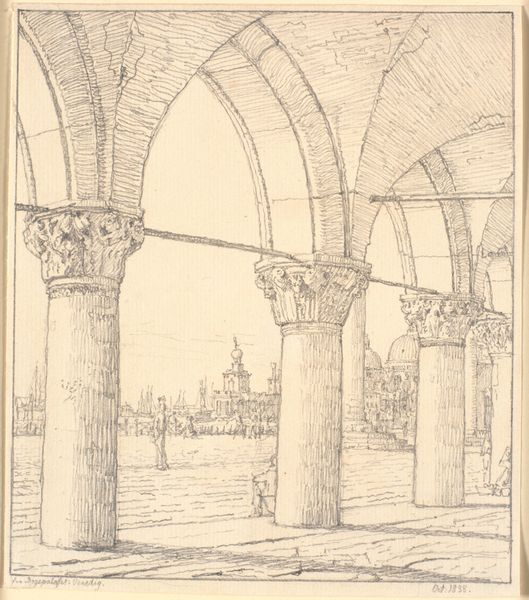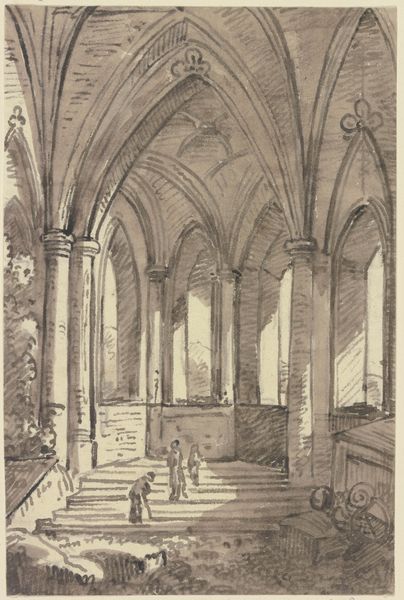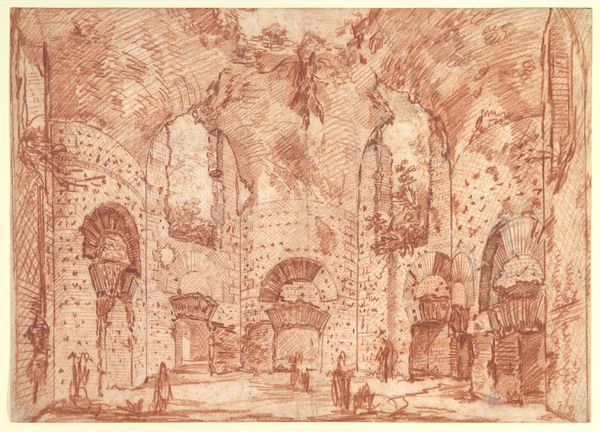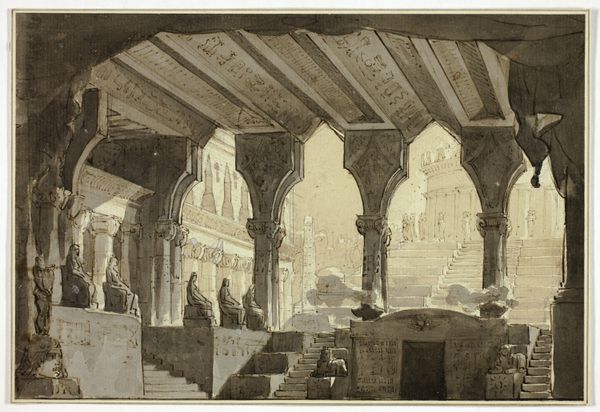
drawing, painting, paper, watercolor, ink
#
drawing
#
painting
#
perspective
#
figuration
#
paper
#
watercolor
#
ink
#
romanticism
#
history-painting
Dimensions: height 135 mm, width 191 mm
Copyright: Rijks Museum: Open Domain
Curator: François Joseph Pfeiffer, an artist you may not immediately recognize, created this watercolor and ink drawing on paper in 1807. It's entitled "Scene uit het toneelstuk Don Luis de Vargas," a scene from the play Don Luis de Vargas. Editor: It has an undeniably theatrical air about it, doesn’t it? Stark and almost unsettling. The cool grays and browns make the scene feel austere. Curator: Indeed. Pfeiffer's artistic practice intersected significantly with his engagement in civic life. The context of the play itself is intriguing—suggesting social critiques that resonated in its time. The image is infused with the politics of the era. Editor: Let’s talk about the materials, though. The combination of watercolor and ink is interesting here. Ink provides definition, especially outlining the architectural forms, while the watercolor softens it, giving it an ephemeral feel, like a half-remembered dream of stagecraft. Look closely and one notices that even the ‘stone’ seems almost fabric-like. Curator: Good eye! And this architectural fantasy is where we see Romanticism entering scenography and set design in this period. It's an appeal to the gothic to stimulate emotion in a politically charged arena of civic and public life. Editor: And it draws us back to the craftsmanship inherent in creating the scene, or the very reproduction here. There’s the labor of the papermaker, the grinding of pigments for the ink and watercolors, the artist’s hand meticulously applying each stroke. It grounds the lofty subject in tangible human effort. Curator: Yes! It forces one to consider the economic systems that allowed Pfeiffer, who held positions as politician and administrator, to depict political tensions that affected those in vastly different socioeconomic echelons of society. Editor: I agree. Considering the material composition adds layers of complexity that we miss when we only focus on Pfeiffer and his political world. Curator: It underscores, ultimately, the social dimensions intertwined within artistic representation and material culture. Editor: Right. I walk away with a deeper appreciation for all that is seen and unseen in creating the moment of theater as Pfeiffer imagines it for us.
Comments
No comments
Be the first to comment and join the conversation on the ultimate creative platform.
